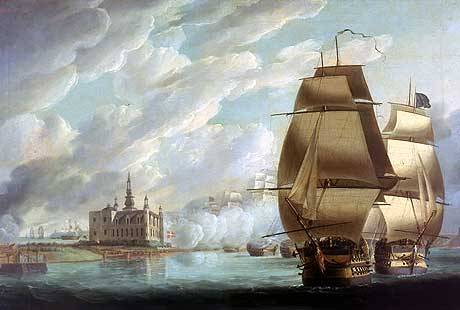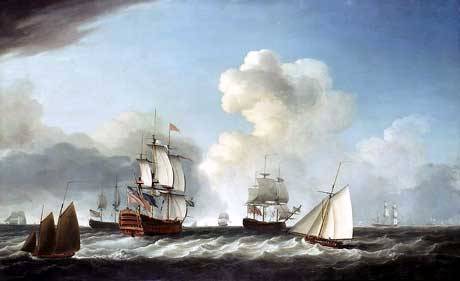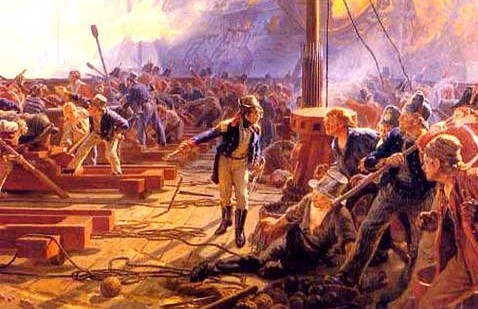gunsandposes:THE ROAD TO THE BATTLE OF COPENHAGEN — It’s April 2, 1801. During the French Revolution
gunsandposes:THE ROAD TO THE BATTLE OF COPENHAGEN — It’s April 2, 1801. During the French Revolutionary Wars, Great Britain has maintained its naval superiority over France, in part, by enforcing a blockade of sorts, searching neutral ships suspected of trading with France and seizing cargo they suspect is headed for a French port. Meanwhile, some of the seafaring nations of northern Europe are supremely annoyed by this policy. (Remember: These are the days when the Royal Navy was annoying just about everybody.) The Russian tsar, Britain’s erstwhile ally, joins with Sweden, Denmark-Norway, and Prussia to form the League of Armed Neutrality with the aim to counter British naval strength and maintain open trade on the high seas. The British don’t like this at all, seeing the League as a pro-French threat.Here’s the thing: This League of Armed Neutrality is actually the Second League of Armed Neutrality. The First League of Armed Neutrality was an alliance of European naval powers from 1780 to 1783 during the American Revolution. The original league had the same goal of containing the power and reach of George III’s Royal Navy, and they were successful. This is why the British dreaded this sequel league of Baltic powers, which could muster over a 120 combined ships of the line against the British fleet. So, the Brits decide to strike first by smashing elements of the Northern League before they can properly deploy in the North Atlantic. The key is to make a move before the Russian ports thaw out, freeing up the tsar’s maritime forces to join with their Scandinavian allies. If the Brits can beat up on the Scandinavian navies before the Russians are available, they will preemptively neutralize the Neutrals, so so speak.And that brings us to Copenhagen, where Dano-Norwegian forces are concentrated. The British are on the way to press for Danish acquiescence through “amicable arrangement or by actual hostilities” — and they have Admiral Horatio Nelson on their side.Find out who prevails at Princeton, Wikipedia, and the British National Archives. Images from British Battles. -- source link
Tumblr Blog : humanoidhistory.tumblr.com



